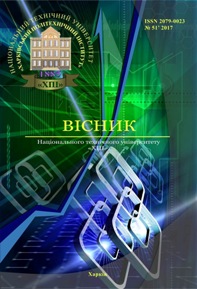Medium-term planning information technology for quality improvement of the software development process based on the CMMI model
DOI:
https://doi.org/10.20998/2079-0023.2017.51.05Keywords:
dynamic problem statement, software development, CMMI model, the second level of maturity, target profileAbstract
Information technology is considered for medium-term planning for quality improvement of the software development process based on the CMMI model for the dynamic problem statement. The information system forms a rational plan for the software development process improvement and also allows, within the defined planning period, to determine precisely those practices and focus areas of the maturity model, for which it is necessary to increase the capability level, under conditions of limited resources. The test case for the second level of maturity of the software company is considered. The scheduled period consists of three sub periods, and the target profile may contain any quantity of practices. The analysis of the obtained results, which are the input data of the information system that solves the static problem, is carried out.
References
ISO/IEC 12207:2008, Information technology – Software life cycle processes / ISO/IEC 12207:2008, Information technology – Software life cycle processes. International Organization for Standardization, 2008, 122 p.
Chrissis M. B., Konrad M., Shrum S. CMMI: Guidelines for Process Integration and Product Improvement. Boston, MA, USA, AddisonWesley Publ, 2003, 688 p.
Mutafelija, B. Process improvement with CMMI v1.2 and ISO standards. Boca Raton, FL, USA, Auerbach Publ., 2009, 406 p.
Godlevskiy M. D., Braginskiy I. L. Dinamicheskaya model' i algoritm upravleniya kachestvom processa razrabotki programmnykh sistem na osnove modeli zrelosti [Dynamic model and quality management algorithm of software systems development process based on maturity models]. Problemy informatsionnykh tekhnologiy. Herson, OLDI-Pljus Publ., 2012, pp. 6–13.
Godlevskiy M. D., Goloskokova A. A. Sintez staticheskikh modeley planirovaniya uluchsheniya kachestva protsessa razrabotki programmnogo obespecheniya [Static planning models synthesis of quality improvement of software development process]. Shіdno– Єvropejs'kij zhurnal peredovih tehnologіj. Kharkiv, NPP ChP «Tekhnologicheskiy Tsentr» Publ., 2015, no. 3/2 (75), pp. 23–29.
Godlevskiy M. D., Rubin Je. E., Goloskokova A. A Dinamicheskaya model' planirovaniya uluchsheniya kachestva protsessa razrabotki programmnogo obespecheniya [Dynamic planning model of quality improvement of software development process].Visnyk NTU "KhPI" [Bulletin of the National Technical University "KhPI"]. Kharkov, NTU "KhPI" Publ., 2015, no. 58, pp. 3–6.
Godlevskiy M. D., Shehovcov V. A., Braginskiy I. L. Printsipy modelirovaniya otsenki i upravleniya kachestvom protsessa razrabotki programmnogo obespecheniya [Modeling principles of assessment and control of quality in software development process]. Vostochno-Evropejskij zhurnal peredovyh tehnologij. Kharkiv, NPP ChP «Tekhnologicheskiy Tsentr» Publ., 2012, no. 5/3 (59), pp. 45-49
Krjuchkovskiy V. V., Petrov Je. G., Sokolova N. A., Hodakov V. E. Introspektivnyy analiz [Introspective analysis]. Metody i sredstva ekspertnogo otsenivaniya [Methods and techniques of the expert estimation]. Herson, Grin' D. S. Publ., 2011. 168 p.
Pavlovskaya T. A. C#. Programmirovanie na jazyke vysokogo urovnya [C#. High-level language programming]. SPb, Piter Publ., 2009. 432 p.
Godlevskiy M. D., Braginskiy I. L. Informatsionnaya tekhnologiya upravleniya kachestvom protsessa razrabotki programmnogo obespecheniya [Information technology for the quality management of the software development process]. Vostochno-Evropeyskiy zhurnal peredovykh tekhnologiy Kharkiv. NPP ChP «Tekhnologicheskiy Tsentr» Publ., 2013, no 2/9 (62), 63–67pp
Downloads
Published
How to Cite
Issue
Section
License
Copyright (c) 2018 Bulletin of NTU “Kharkiv Polytechnic Institute”. Series: System Analysis, Control and Information TechnologiesAuthors who publish with this journal agree to the following terms:
- Authors retain copyright and grant the journal right of first publication with the work simultaneously licensed under a Creative Commons Attribution License that allows others to share the work with an acknowledgement of the work's authorship and initial publication in this journal.
- Authors are able to enter into separate, additional contractual arrangements for the non-exclusive distribution of the journal's published version of the work (e.g., post it to an institutional repository or publish it in a book), with an acknowledgement of its initial publication in this journal.
- Authors are permitted and encouraged to post their work online (e.g., in institutional repositories or on their website) prior to and during the submission process, as it can lead to productive exchanges, as well as earlier and greater citation of published work (See The Effect of Open Access).


